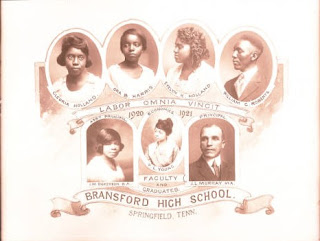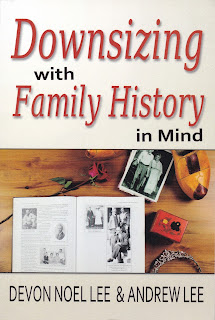Christmas 2022 is over! It's time to get back to genealogy and finding those ancestors.
But wait....
Did you get Christmas cards sent to you this season? What are you going to do with them?
I have a confession to make, I have kept every single Christmas card that I have ever received. Yes, I know, I have a problem. Maybe you have a stack of Christmas cards from this Christmas and from Christmases past. Maybe you also keep other greeting cards from Birthdays, Valentine's Day, etc.
 |
| Christmas Card, Houston County, TN. Archives |
Most importantly, if you have old greeting cards that are in your genealogical record collections, are you preserving them properly?
If you are like me and have kept greeting cards from various events, holidays and special occasions and you intend on keeping them, it is important that they are preserved just like the other documents in your collection.
Preserving greeting cards is very easy, it's really a matter of obtaining the right materials and being consistent in the archiving process.
Archival Materials You Will Need and can be purchased at any online archival materials store:
-Archival plastic sleeves in the size that fits the greeting card
-Archival Box, like this one from Gaylord Archival
Before the preservation process can take place, it is important to document each greeting card and digitize it. Placing a note in your family genealogy software that says something like "Christmas 2016, received Christmas card from Aunt Marie, she signed the card". If the person put a note in the card, you might want to transcribe that into the notes field as well. Also, make notes about the senders mailing address too.
 |
| Easter Card, Houston County, TN. Archives |
Digitizing greeting cards can be very tedious and time consuming. However, if you want to insure that these records are preserved in case of a disaster that destroys the cards, this is what needs to be done.
I normally scan the entire card; the front, inside and back. I place those scans in the computer file of the ancestor who sent me the card in a separate folder entitled "Greeting Cards".
I also take a soft #2 pencil and on the back of the card I write the year I received the card. Hopefully, the card's subject will tell what the occasion was but if not, you might want to make a note of the occasion.
Take the greeting card and put it in an archival sleeve that is the right size for the card. The archival supply stores have all kinds of sizes to choose from.
Next, put the cards in a Hollinger box. I normally organize the greeting cards by surname and then within that surname I put the cards in date order by year.
 |
| Hollinger Box |
If you have a lot of greeting cards, like I do, you might want to dedicate a Hollinger box to one surname.
The process is quite simple and gets the greeting cards in order so that they can be enjoyed and if you are looking for a certain card, they are easy to find.
Online Archival Supply Stores:
Gaylord Archival
http://www.gaylord.com/
Hollinger Metal Edge
http://www.hollingermetaledge.com/
University Products
https://www.universityproducts.com/
Light Impressions
http://www.lightimpressionsdirect.com/
REMEMBER: IT'S NOT ALL ONLINE, CONTACT OR VISIT AN ARCHIVE TODAY!
Get My Legacy QuickGuide
Preserving Old Family Letters: Tips from an Archivist
https://bit.ly/2rW4Q60














































